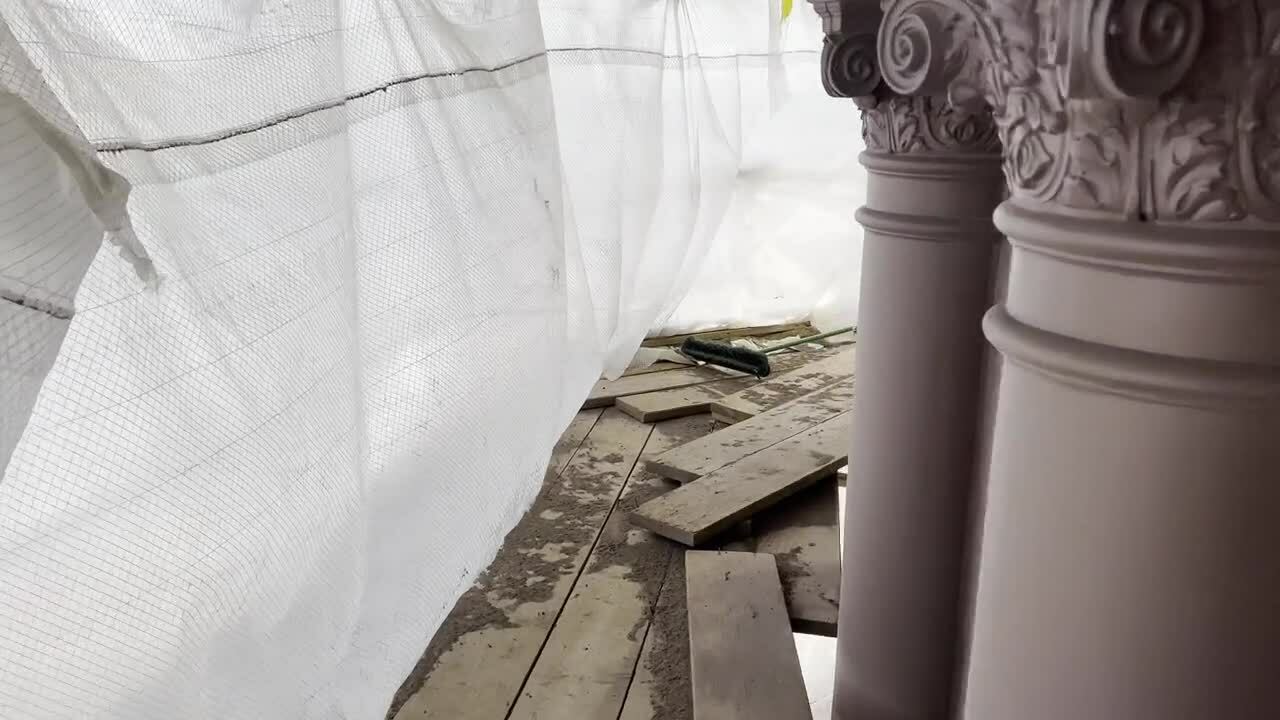The New Jersey State House was built in 1792, and is the second oldest state house still in use. As part of a $300 million renovation, the restoration of the impressive gold dome structure was undertaken. This 160-foot tall (from floor to apex) dome is where sponge media blasting came to the rescue with the solution to a complex surface preparation and historical preservation problem.
G.C. Zarnas & Co Inc. was tasked with the restoration of the cast iron dome structure. “Our scope of work was to remove all existing coatings on the substrate down to bare metal and install a new coating system,” said a project manager and estimator for G.C. Zarnas & Co Inc. Along with the removal of the old and failing coating, the G.C. Zarnas team had to remove all corrosion and oils, soluble salts, and other environmental contaminants from the substrate.
With historical preservation and restoration at the forefront, as well as the ability to conduct the surface preparation process on scaffolding high above the ground in the midst of other trades and in a busy downtown area, traditional abrasive blasting was not a viable option for this job. “Sponge media blasting is a much cleaner process in terms of dust, and given that the job was in the middle of downtown, keeping airborne debris to a minimum was a necessity. It also is less harsh on the substrate than traditional abrasive blasting. This ensures that damage was not done to the underlying historic cast iron structure,” explained the G.C. Zarnas team.
Unlike traditional abrasive media, sponge media is reusable, allowing for a significant reduction in media consumption and disposal. The recyclability of sponge media is an advantage not only in cost, but also for safety and containment reasons. Keeping the media weight to a minimum was critical for the safety of the crew, as the accumulation of dense, unrecyclable abrasive media could compromise the scaffolding structure.
According to the contractor, the biggest challenge on the job was staging the equipment. “We ruled out putting the equipment on the roof as an option, so we had to put all equipment on the ground level. We ran 100+ feet of hose to reach the top of the dome. We also had to have a compressor large enough to push air all of the way through without losing too much pressure at the nozzle,” said a team member, who also noted that this challenge would have been much more difficult if traditional abrasive media was used instead of sponge media.

Once the surface prep was complete, the crew applied the new coating system. The system was from Tnemec, and consists of four coats: a zinc rich primer, epoxy patching of small dents and dings to the metal, an intermediate protective coat and a fluoropolymer topcoat designed to withstand weathering conditions and hold its color for years to come.
Restoration Experts, Evergreene Architectural Arts applied the gold leaf to the exterior section of the structure leaving a well preserved, beaming dome for all to see.








